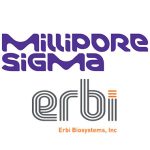Our office culture is transforming, driven by a convergence of technological innovation and evolving generational workforce expectations. In this new era of distributed teams and remote work models, the traditional 9-to-5 office routine is giving way to a more fluid, dynamic hybrid work environment. For research and development (R&D) product teams, this shift isn’t just a change of scenery; it’s a catalyst for reimagining how innovation prevails, where collaboration happens, and what it takes to be part of a truly decentralized workforce.
Implementing a hybrid work environment with R&D teams yields significant benefits, but also presents challenges to make the hybrid resource model successful. When done correctly, organizations benefit from gaining access to diverse talent, specialized skills, and expertise outside their local geography. The diverse experience and perspectives of team members promote problem-solving and enhance innovation. Additionally, flexible work locations and schedules can be attractive to limited pools of talent or younger generations of workers, and the project could progress from areas across the globe seemingly around the clock. The recruitment burden for hybrid teams is lessened from the traditional model of finding local workers or those willing to relocate. With the prevalence of dual-income families, the relocation challenge became more significant when professionals in the same household began pursuing parallel careers and relocation usually meant one partner had to sacrifice a job for the other.
Yet, several challenges must be considered to make an R&D team effective in a hybrid environment. Primary concerns are safeguarding sensitive information and data; fostering seamless coordination, collaboration and communication; and tailoring workflows to suit the unique needs of both the team and the project or program. Given the abundance of digital tools available, the ease of implementing these tools can run counter to addressing the complexities and nuances of R&D in medical device development. In our experience, we’ve seen the implementation of tools and processes to address these challenges underestimated or even overlooked entirely, which poses significant risks to R&D initiatives. In this article, we explore how to achieve successful R&D programs within the context of hybrid environments and share key strategies and best practices to navigate the challenges more effectively.
Security of Proprietary and Sensitive Information
R&D teams can be assembled in a variety of ways. A global manufacturer may have a core internal team and outsource one or more specialties to vendors, consultants, or individual experts. In other cases, a small startup company may engage a product design and development firm or contract manufacturer to bring a new product to fruition. Ensuring the security of proprietary or sensitive information in a hybrid work environment is a chief concern, especially in medical device development where confidentiality and regulatory compliance are critical. Here are some ways R&D teams can achieve this:
- Vendor audits or assessments. Vendor security assessments play a crucial role in adhering to compliance with ISO 13485 quality standard requirements for medical device development. Manufacturers must ensure vendors or suppliers are in compliance with these regulations and that vendors adhere to relevant security standards and controls to minimize the risk of data breaches or unauthorized access to sensitive information, patient information, intellectual property, and regulatory documentation. Audits or assessments may include scrutinizing vendors’ policies for how information is stored, accessed, and retained over time. It may also include how the vendor assesses their own security practices and compliance through regular security audits.
- Internal security audits and assessments. Like vendor security assessments, manufacturers should conduct regular security audits and assessments of their own processes and system or may engage a third party to do so.
- Using secure communication and file sharing tools. Best practice is to ensure tools implemented for communication have end-to-end encryption, such as messaging apps and secure email apps. Free tools used by small businesses and individuals may seem cost-effective, however, they could pose security risks if they are not robustly encrypted. Some companies provide secure company laptops which can be wiped or locked remotely if lost or stolen. Similarly, access to files should not only be encrypted, but file sharing apps should include an audit trail of activity with companies providing role-based access to limit access to only those team members who require access to sensitive files.
- Secure remote access. Establish policies for how team members connect to company networks, such as using Virtual Private Networks (VPNs). VPNs create secure connections and encrypt data between remote devices and company networks.
Scalable Project Management for Team Coordination
Let’s consider a real-world example: Picture a cross-functional program team with remote and in-office team members developing a novel medical platform that includes industrial design, electrical engineering, mechanical engineering, GUI design, software engineering, instructional design/training development, and human factors/usability engineering. To further reveal the complexities of the R&D effort, there are labs in various locations specific to each functional team and only one full-system prototype is available in one of the labs. This real-world example underscores how crucial seamless coordination, collaboration, and communication are.
Large programs, like the one described, and even smaller programs with fewer teams or team members, benefit from a right-sized or scalable project management process. In the hybrid world, effective project management provides structure, coordination, and oversight allowing stakeholders, leadership and management visibility into progress, risks, and issues in real-time during the program. Project managers with their tools and resources play an essential role promoting innovation and problem solving, as well as facilitating communication, collaboration, and knowledge sharing with the entire team, including remote team members. Project managers are also responsible for smoothing out potential obstacles to program success by identifying risks that can occur and how those risks can be mitigated if they occur. For example, if the software team’s deliverable is going to be late and impacts the human factors team’s ability to conduct a human factors/usability evaluation, resolutions are identified and implemented to try to prevent or minimize the delay or adjust to accommodate the delay.
While younger generations in the workforce have expectations for more flexible work conditions, productivity of distributed teams or team members remains a top concern with organizational leadership. Project management tools for resource allocation, comprehensive project planning, time tracking, and monitoring time on tasks versus progress assists project managers with ensuring productivity across the team. These results-based processes help alleviate leadership concerns about distributed teams and workers being productive and keeping to tight deadlines. Activities including an initial review of the project plan with the entire team, and regular (e.g., weekly) reviews of progress, tasks completed, and status of in-progress/upcoming tasks and deliverables keep the entire R&D team informed while promoting ownership and accountability. Interim milestones for deliverables become more critical and serve as checkpoints to ensure quality of deliverables and that longer-term project timelines are met. Having an online project management tool accessible by all team members is essential to providing these insights to stakeholders, leadership, project management and teams alike.
Virtual versus Real-Time Collaboration
Across the R&D spectrum, it can be deduced that certain disciplines actually benefit from remote operations. Reduced distraction within the conventional office environment is a welcome change to developers who must stay focused on their task-at-hand. Other workers who accomplish much of their deliverables without constant collaboration are extremely well-suited to hybrid operations. Additionally, designers who work in two-dimensional environments, such as User Experience and Graphic Designers, can more easily communicate their work with remote teams via real-time online meetings.
Conversely, those working in a complex and three-dimensional world will need more sophisticated tools to adequately convey ideas to their teams. While 3D-CAD visualization has greatly improved over time, sometimes the ability to share designs that can be touched, turned, and disassembled in the flesh cannot be efficiently represented in a virtual manner. These types of collaborators should spend more time in a conventional studio environment to maintain the quality of creative communication that has long been the norm.
Collaboration and Communication Tools
Today’s R&D teams operating in hybrid environments need the ability to connect, share ideas, and work together effectively across physical distances to share knowledge and propel innovation. Traditional modes of collaboration and communication do not fully support hybrid environments and can fall short in fostering a culture of open communication and collaboration. It is all too easy for a remote team or individual to be overlooked when in-office team members conduct activities, such as a brainstorming session, only to forget to include the remote team members!
To deal with challenges like these, organizations must carefully establish expectations and tools that contribute to consistent communication among team members. Video conferencing, chat or instant messaging, and project management systems all contribute to real-time collaboration and communication and design reviews. Teams should be encouraged to balance the timing of meetings and calls across multiple time zones by alternating late and early meeting times or recording video meetings so team members can watch the recording later. Artificial Intelligence (AI) tools, such as live transcriptions and translation services, can contribute to better understanding of communications among team members in other countries.
Document-sharing tools are also a necessity to give team members the ability to access and update documents from any location maximizing efficiency, keeping progress on-track and meeting established deliverable milestones. And while tools are crucial, leadership and project managers must set expectations and encourage engagement across cross-functional teams to ensure interdisciplinary collaboration, knowledge-sharing, problem-solving, and holistic product development.
Virtual Reality (VR), Augmented Reality (AR), and Mixed Reality (XR) tools are becoming more accessible to R&D teams with costs of technology edging down into more affordable ranges. VR may arguably be the most practical tool for R&D teams in hybrid environments given the lower costs and accessibility. VR can establish a virtual environment in which design teams can evaluate ideas based on the user’s attributes. For example, if a user is expected to open a drawer that is four feet off the floor, VR can help evaluate users of varying demographics to consider if they can open, visualize, and access the drawer. This application of VR reduces the need to be on-site or recreate large, complex environments while gaining insights necessary to create designs that meet users’ needs. The virtual nature of these technologies creates a level of design evaluation portability that empowers distributed team effectiveness.
Three dimensional (3D) printed models offer a physical means to visualize and refine ideas no matter the physical location of the team member. When functional prototypes are not yet available, 3D printed models or mock-ups can be created anywhere in the world that has access to 3D-printing tools. These on-demand “rapid-prototypes” facilitate early human factors/usability evaluations or user preference studies which are essential to fully embrace the design innovation process.
Achieving R&D success within the context of hybrid environments brings a transformative power to innovation. The diverse perspectives and experiences of dispersed team members collectively fuel programs while the burden to recruit exceptional talent is lowered. Realizing a thriving hybrid work environment requires careful thought and implementation of the right mix of communication, robust project management, data and information protection, and collaboration technologies that suit the team members ultimately dissolve boundaries while enhancing design and development. Embracing the hybrid work environment means staying on the cutting edge of how the team can work together, while creating products that have the power to shape the future.







